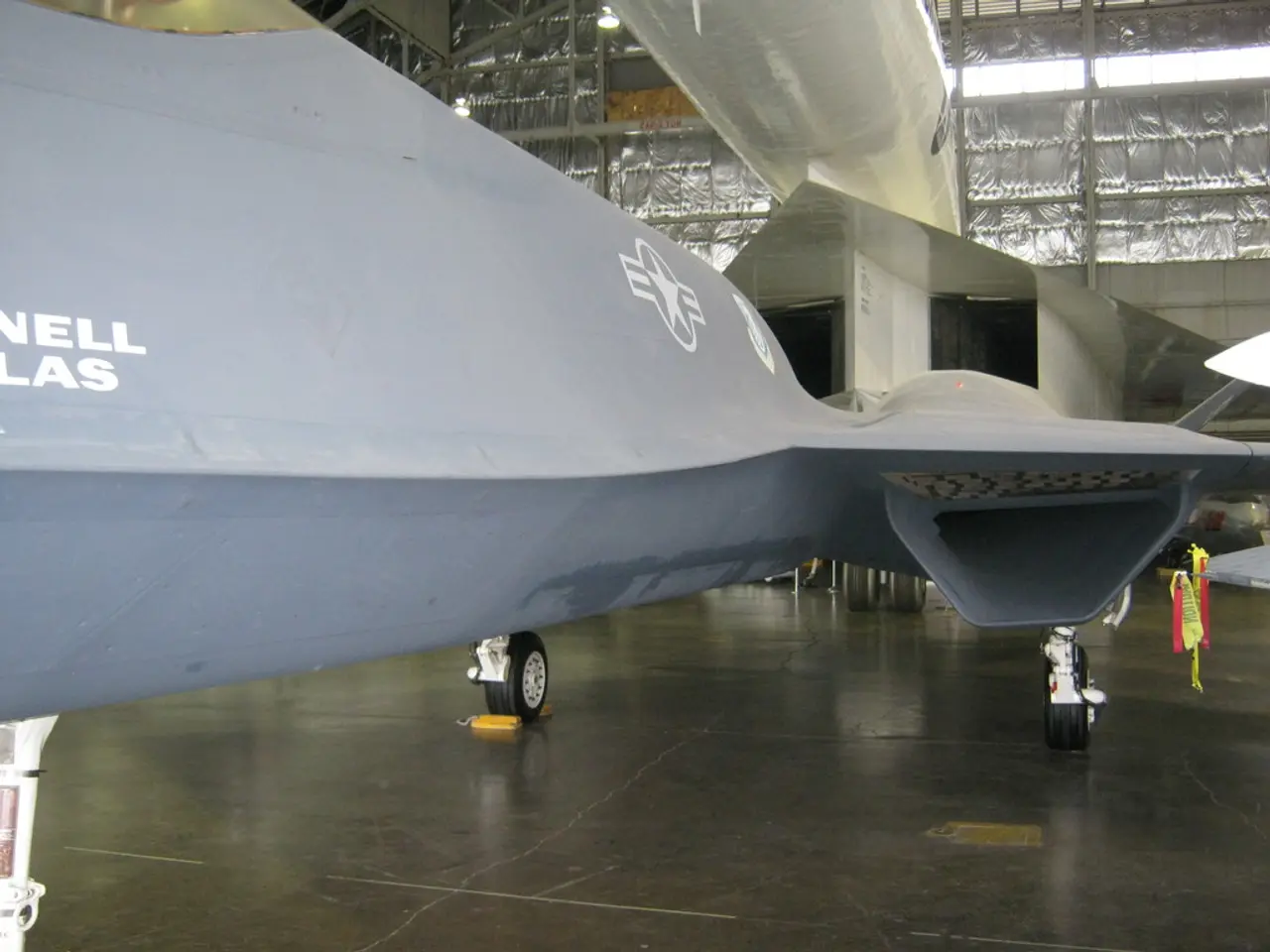Rapid Global Exploration: Discovering the Capacity of Chinese Aircraft to Circumnavigate the World in just Two Hours
China's groundbreaking development of a hypersonic aircraft promises a significant leap in aviation technology, with the potential to revolutionise international travel and commerce. This revolutionary aircraft, designed to complete intercontinental trips in a fraction of the current time, has been in the works for several decades, marking China's ambition to become a leader in the aerospace industry.
Key Advancements
The aircraft's most notable feature is its hypersonic speed capability, enabling it to travel at speeds up to 12,427 mph, circumnavigating the Earth in just two hours. For instance, a New York to London flight that currently takes about seven hours could be shortened to a mere 16 minutes. The plane's innovative propulsion technology, based on rotational and oblique detonation, enhances energy efficiency and stability at extreme speeds, representing a "quantum leap" in hypersonic flight.
China's Northwestern Polytechnical University has successfully tested the Feitian 2 hypersonic vehicle, powered by a kerosene-hydrogen peroxide Rocket-Based Combined Cycle (RBCC) engine. This engine allows for variable-geometry intake operation, thrust-varying acceleration, and autonomous flight with a variable angle of attack, promising to reduce vehicle weight and increase fuel efficiency. The Feitian 2 serves as an experimental platform, advancing hypersonic propulsion and flight technologies, and gathering valuable real-flight data to further the development of civilian and military hypersonic vehicles.
Challenges
Despite its advancements, the Chinese revolutionary aircraft faces significant challenges. Developing engines capable of stable, efficient operation at hypersonic speeds remains a significant engineering challenge. Maintaining control and safety at such velocities requires advanced materials and flight control systems.
Another concern is the environmental impact of hypersonic flight. Although the new propulsion system may reduce carbon emissions compared to traditional aircraft, hypersonic flight could introduce new environmental impacts such as sonic booms, high-altitude emissions, and noise pollution that warrant thorough evaluation.
Global aviation infrastructure, including airports and air traffic control, will need to adapt to accommodate hypersonic flights. Regulatory frameworks must evolve to address safety, airspace management, and environmental standards for such high-speed travel. The technology's military applications might complicate international cooperation and export controls, potentially slowing broader adoption for civilian air travel.
Impact on International Business, Tourism, and Environment
If successful, the Chinese revolutionary aircraft could revolutionise international business by enabling near-instantaneous face-to-face meetings across continents, enhancing global collaboration and productivity. Companies could operate more seamlessly on a global scale. Rapid global travel could also boost tourism by making distant destinations accessible for short trips, increasing tourism volumes and economic benefits for more regions. Lower travel times may also encourage more frequent international travel.
However, potential environmental risks from operating at hypersonic altitudes and speeds require comprehensive study to mitigate negative impacts. If the aircraft achieves greater fuel efficiency and lower emissions per mile, it could reduce aviation's carbon footprint despite increased travel frequency.
In conclusion, China's hypersonic aircraft embodies a transformative advancement with the potential to reshape global travel, commerce, and tourism by compressing travel times to unprecedented levels. Its success depends on overcoming significant technological, environmental, and regulatory challenges, and it could redefine the future of aviation and global connectivity.
- The innovative propulsion technology of the hypersonic aircraft, based on rotational and oblique detonation, represents a significant "quantum leap" in hypersonic flight, promising to enhance energy efficiency and stability at extreme speeds.
- The environmental impact of hypersonic flight is a concern, as it could introduce new issues such as sonic booms, high-altitude emissions, and noise pollution, which warrant thorough evaluation.
- If successful, the Chinese revolutionary aircraft could have a profound impact on international business and tourism by enabling near-instantaneous global collaboration, boosting tourism volumes, and encouraging more frequent international travel, yet comprehensive study is necessary to mitigate potential environmental risks.




